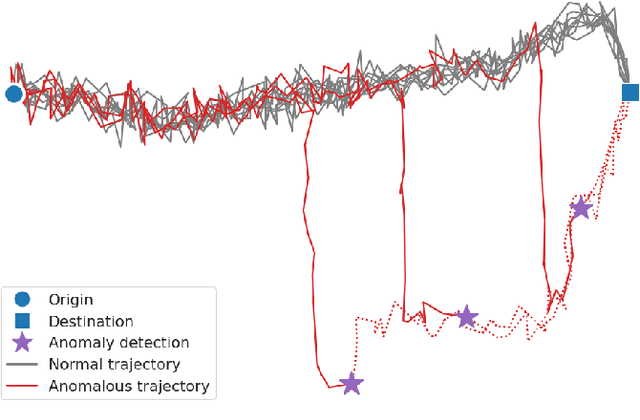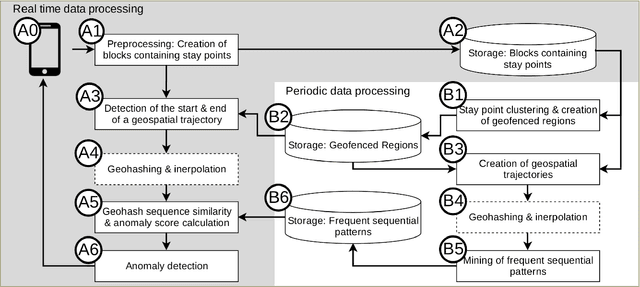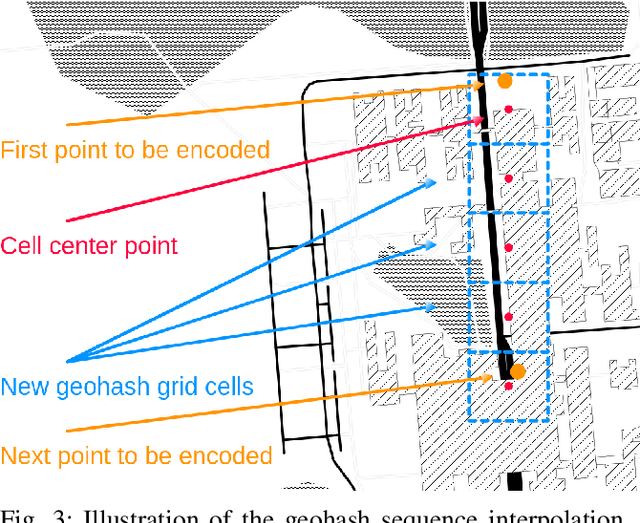Panagiotis Tampakis
Detecting Wandering Behavior of People with Dementia
Oct 25, 2021



Abstract:Wandering is a problematic behavior in people with dementia that can lead to dangerous situations. To alleviate this problem we design an approach for the real-time automatic detection of wandering leading to getting lost. The approach relies on GPS data to determine frequent locations between which movement occurs and a step that transforms GPS data into geohash sequences. Those can be used to find frequent and normal movement patterns in historical data to then be able to determine whether a new on-going sequence is anomalous. We conduct experiments on synthetic data to test the ability of the approach to find frequent locations and to compare it against an alternative, state-of-the-art approach. Our approach is able to identify frequent locations and to obtain good performance (up to AUC = 0.99 for certain parameter settings) outperforming the state-of-the-art approach.
Online Co-movement Pattern Prediction in Mobility Data
Feb 17, 2021



Abstract:Predictive analytics over mobility data are of great importance since they can assist an analyst to predict events, such as collisions, encounters, traffic jams, etc. A typical example of such analytics is future location prediction, where the goal is to predict the future location of a moving object,given a look-ahead time. What is even more challenging is being able to accurately predict collective behavioural patterns of movement, such as co-movement patterns. In this paper, we provide an accurate solution to the problem of Online Prediction of Co-movement Patterns. In more detail, we split the original problem into two sub-problems, namely Future Location Prediction and Evolving Cluster Detection. Furthermore, in order to be able to calculate the accuracy of our solution, we propose a co-movement pattern similarity measure, which facilitates us to match the predicted clusters with the actual ones. Finally, the accuracy of our solution is demonstrated experimentally over a real dataset from the maritime domain.
 Add to Chrome
Add to Chrome Add to Firefox
Add to Firefox Add to Edge
Add to Edge